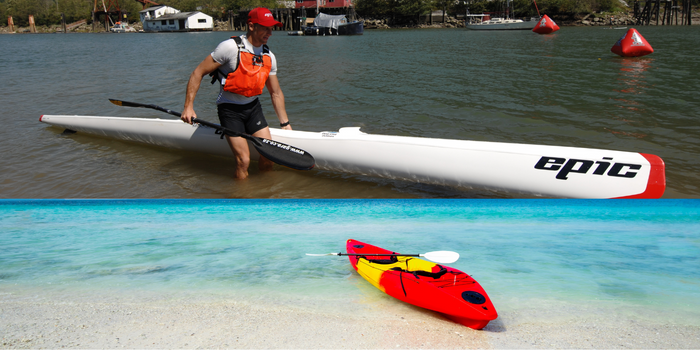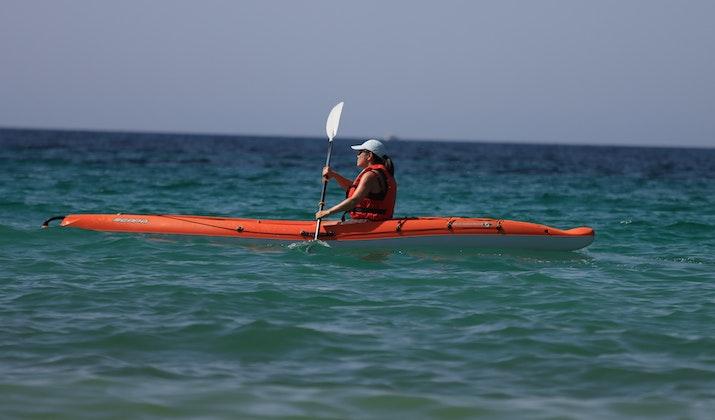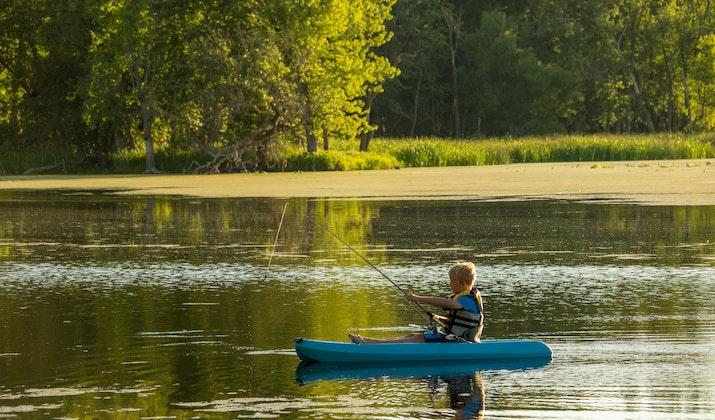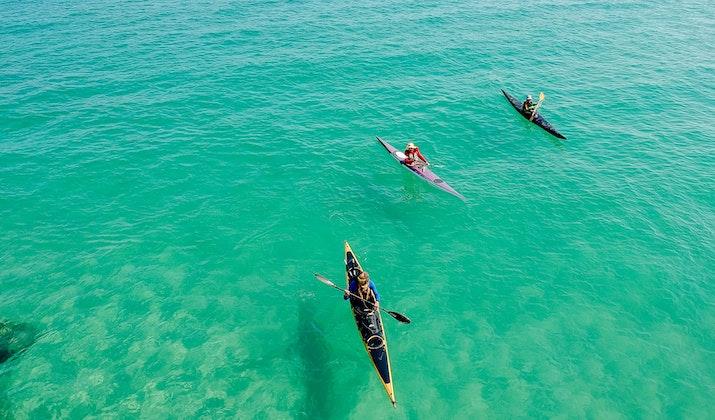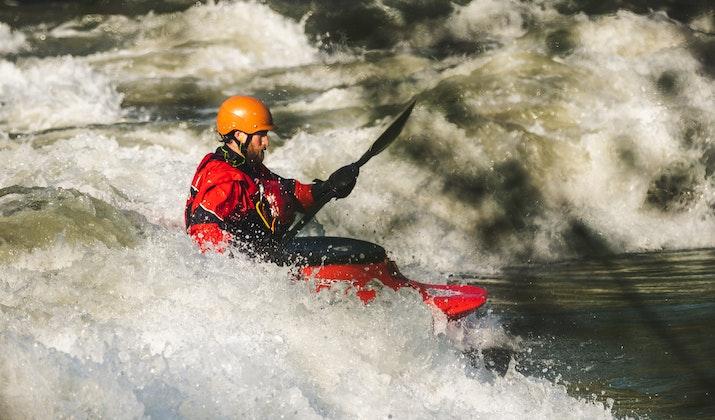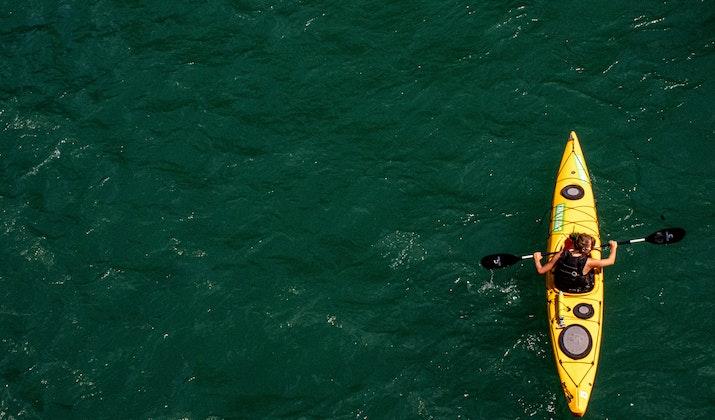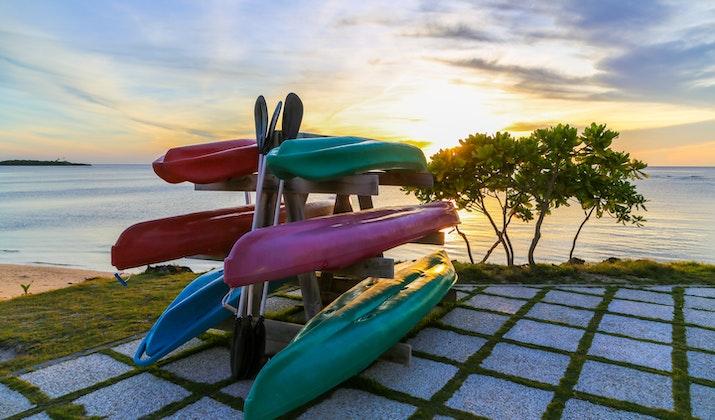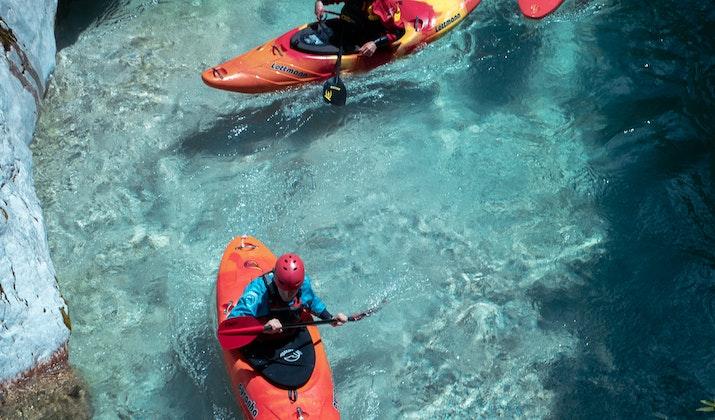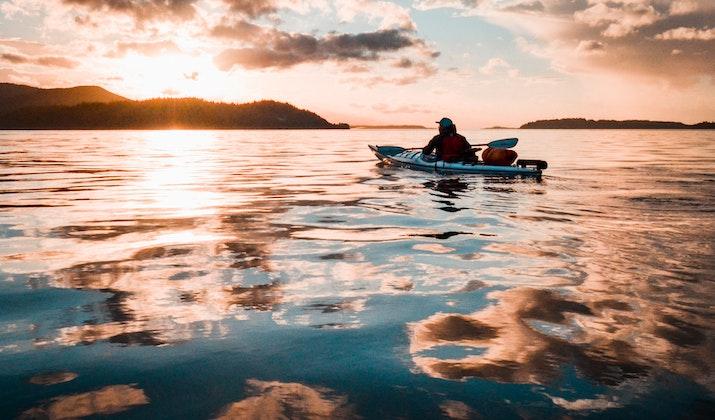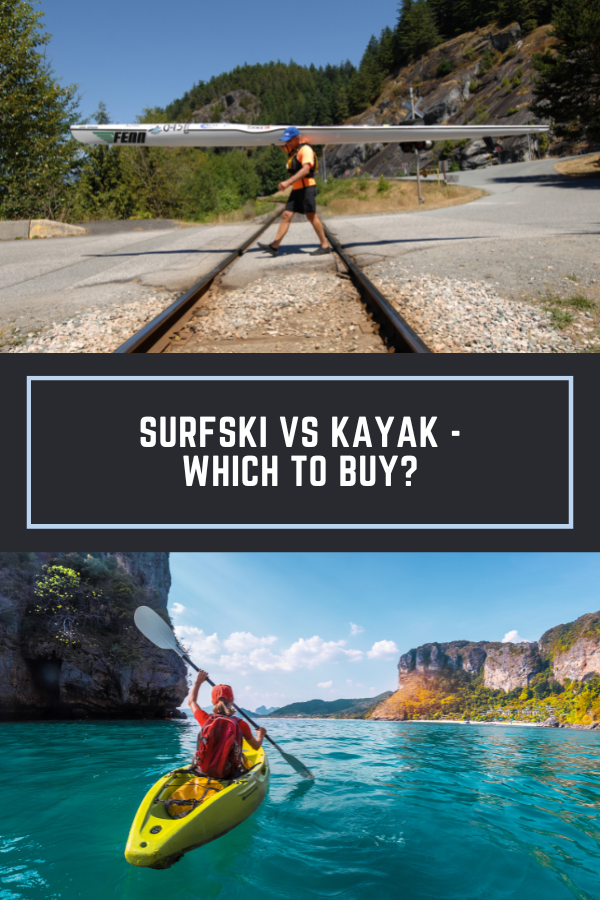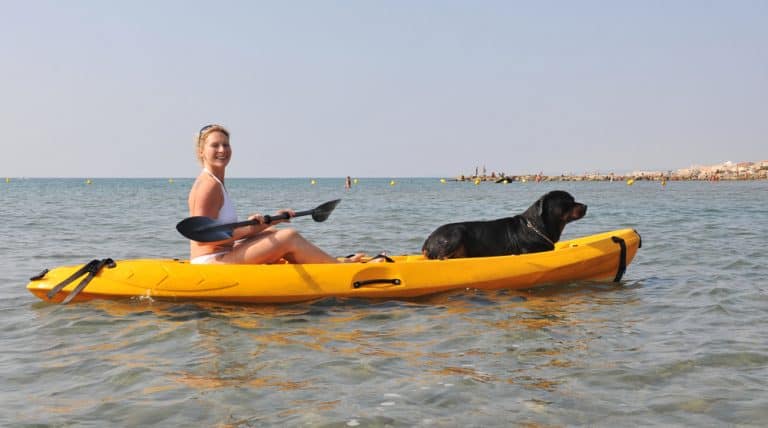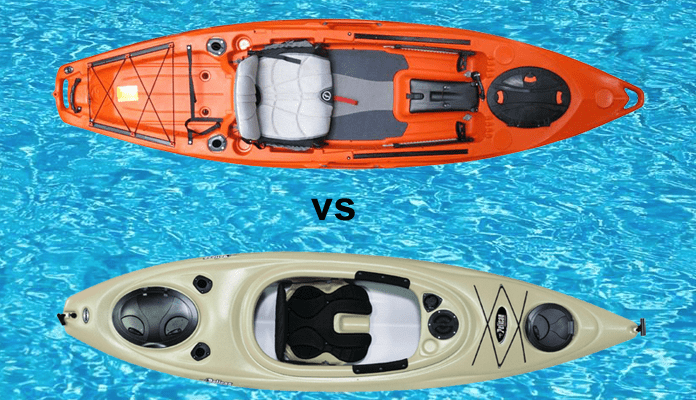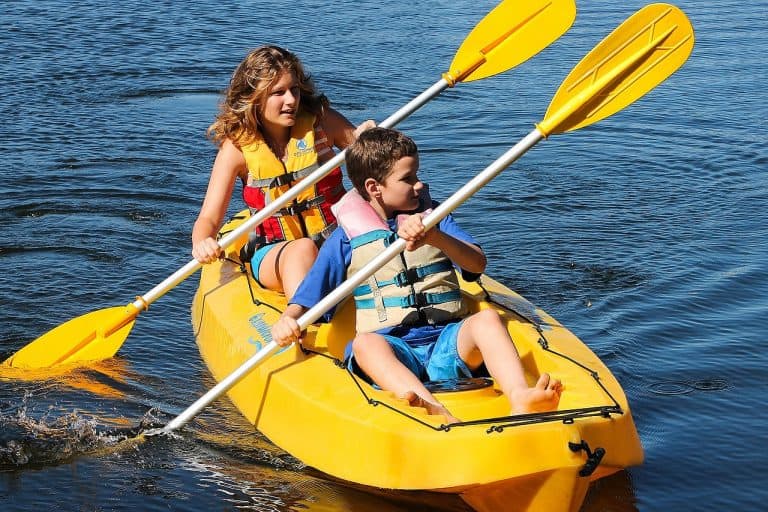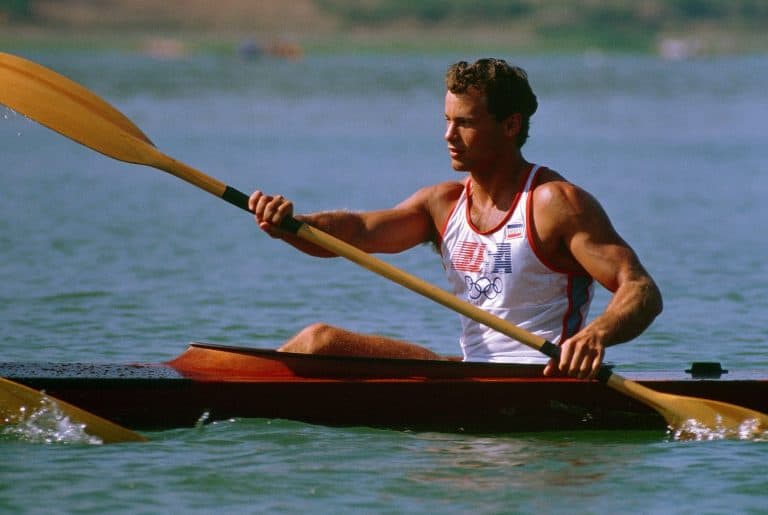Are you thinking about buying a kayak or a surfski but you’re not sure which one is better for you?
Maybe you don’t even know the difference between the two or the factors to consider before deciding which one will be better suited to your needs.
In this article, I am going to explain in detail what sets surfskis and kayaks apart and what you should look out for before picking one over the other.
Let’s begin.
Photo by Efrem Efre
What is a Surfski?
A surfski is a type of paddle craft that is manned by one individual. The earliest version of a surfski was created by Harry and Jack McLaren in 1912 near Port Macquarie in South Wales, Australia. The brothers used the boat to explore oyster beds and surf on beaches in the area.
Later on, surfskis started being used by lifeguards to rescue people who were drowning. By 1946, surfskis had made it into lifesaving championships and competitions, but it wasn’t until 1976 that surfski races became open to the general public, and not just certified lifeguards.
Since then surfskis have become more widely used as a paddling and racing craft for both independent boating activities and competitive sports.
Although a surfski closely resembles a kayak in many ways, it has a few significant differences when it comes to length and cockpit design.
Unlike kayaks which typically have a sunken indentation on the top for paddlers to comfortably settle into, the indentations on surfskis are much more shallow.
The cockpit on a surfski is designed in a sit-on-top style so there is no spray deck or splash cover to keep water out.
However, a lot of surfski models feature a self-bailer that allows the boat to drain any water that makes its way into the cockpit. Currently, there are only two types of surfskis to choose from: the ocean ski and the spec ski.
The ocean ski is designed to handle long-distance paddling on the wide open sea, while the spec ski is made for lifesaving activities.
Ocean surfskis have a deeper cockpit and are longer than spec skis. However, spec skis are tougher and have more rocker – also known as longitudinal curvature – than their ocean-racing counterparts, so they’re more stable and able to easily cut in and out of waves.
What is a Kayak?
Photo by Tom Fisk
A kayak is a small watercraft designed to fit one or more paddlers who propel it using a double-bladed paddle. Unlike surfskis which have only been around for a little over a hundred years, kayaks have been in use for thousands of years.
Traditional kayaks are known as sit-in kayaks because they have an enclosed cockpit with a spray deck draped over it to keep water from getting inside.
However, some modern-day kayak designs – sit-on-top kayaks – do not include cockpits or require paddles to propel them as is the case with foot pedal kayaks. Some kayaks are even powered by gasoline engines and electric motors.
Although kayaks have three broad categories – sit-in, sit-on-top, and hybrid kayaks – there are also different types of kayaks to pick from depending on what you want to use them for.
There are recreational kayaks for those who want to take up paddling as a pastime, and sea or touring kayaks for people who intend to do a lot of long-distance paddling and exploration.
You also have fishing kayaks that allow you to combine paddling and fishing into one fun-packed activity. Then there are whitewater kayaks which are designed to help you make quick maneuvers in choppy, fast-flowing waters.
Surfski vs Kayak – Size, construction, and design
Let’s take a look at the differences between a kayak and a surfski with regards to how they look and function and what they are built with.
Surfski
In terms of length, surfskis come out ahead. They are typically between 5.0-6.0 meters (16.5-21 ft) long, while their width usually falls between the 40-50 cm range.
The surfski’s narrow frame enables it to move faster than most paddled crafts. They also typically feature a stern rudder controlled by a foot pedal to allow them to paddle into open water and ride swells.
Surfskis are made using different kinds of materials and the right one for you will depend on your budget and preference.
If you want a cheaper surfski that’s not so lightweight and can withstand a lot more wear and tear especially if you plan on paddling rivers and shallow waters, opt for polyethylene models.
Surfskis made with kevlar, fiberglass, carbon fiber, or a mixture of these materials are the better option if you want a lightweight craft that can weave through the water effortlessly while in heavy surf.
Kayak
Photo by Alexander Bobrov
Kayaks come in varying lengths depending on the type, but they’re generally shorter than surfskis. Touring and sea kayaks sit at the top of the kayak length ladder because they are designed for longer paddling trips and the extra length makes them go faster so you don’t spend as much time in the water.
Sea or touring kayaks range between 4.9-5.8 meters (16-19 ft). For recreational kayaks, the generally accepted range is between 2.7-4.3 meters (9-14 ft), so they won’t go as fast as their sea counterparts but they’ll provide more stability.
Whitewater kayaks, on the other hand, are the shortest of the bunch and rarely go past 2.4 meters (8 ft) in length to ensure they can be easily maneuvered.
Modern-day kayaks are constructed with materials like fiberglass, polyethylene, aluminum, Hypalon, plywood, carbon fiber, polyester, kevlar, polyurethane, neoprene, polyvinyl chloride (PVC), and rubberized fabric.
Kayak vs Surfski – Speed and efficiency
How do the kayak and surfski compare on the speed front? Which is the faster watercraft?
Kayak
Photo by Brett Sayles
A sea kayak will get you from point A to point B faster than a recreational kayak, but it will still lag behind a surfski because it has a slow maximum hull speed and greater length-to-width ratio.
This is not to say that kayaks are terribly slow – they are not – it’s just that length plays a pretty significant role in paddling speed.
The longer a boat is, the faster it will go, and kayaks are just not designed to be as long as surfskis so they have the lower hand if you’re trying to maximize speed.
However, you can still expect to average between three to four miles per hour or even as much as five to six miles per hour on a longer kayak.
For shorter kayaks like whitewater kayaks or playboys, your paddling speed will be limited to two miles per hour on average.
A kayak is the better purchase option if you’re a beginner because speed and distance shouldn’t be a priority for you as much as improving your skills at this point in your paddling journey.
Surfski
If you’re looking to amp up your speed on long-distance ocean-crossing trips, you won’t find another paddled craft for this purpose that’s faster than a surfski.
Even if you only intend to explore flatwater, the surfski’s speed is still unbeatable unless you can get hold of an Olympic K1 or K2 kayak.
The length and narrowness of the surfski make it very effective for cutting through large and steep waves.
If you want to push yourself to the limit and test your paddling techniques, fitness level, or how fast you can go without being inhibited by your boat, the surfski’s slender design can make this a reality.
Its long length and under stern rudders enable it to punch through fast-flowing waters without difficulty, propelling you forward at a faster speed than traditional kayaks.
A surfski might be a better investment for you than a kayak if you’re an intermediate or experienced paddler who wants to travel a longer distance in a shorter amount of time without using up too much effort.
Surfski vs Kayak – Boat Usage
Before choosing to buy a surfski or a kayak, you need to consider where you will be going paddling and what type of paddling you will be doing be it racing, fishing, relaxing, touring, or working out.
So let’s find out what purposes kayaks and surfskis are best suited for so you can decide which is the right option for your specific needs.
Surfski
Surfskis are designed for high-speed paddling on open water, particularly the ocean. The bow of a surfski is designed to puncture huge waves, get rid of water, and pull the boat back to the water’s surface when it gets submerged in the course of riding a wave.
Using a surfski is the perfect way for paddlers to blend fitness and adventure into one epic activity that gets their blood pumping.
The surfski is built to withstand all kinds of weather conditions. It can also be used for recreational paddling on other water bodies such as dams, lakes, and rivers on days when you want to take things slow.
If you are more thrill-seeking, fitness-oriented, or looking to paddle downwind or participate in competitive racing even if it’s just for fun, the surfski’s speed and ergonomics make the most sense.
Kayak
Photo by Blue Arauz
Kayaks are built to handle a wide array of paddling destinations and water conditions. They can go from river to lake to the open sea and day tours to multi-day expeditions without much difficulty.
However, they won’t go as fast as surfskis. The hulls of kayaks have long and smooth water lines that allow them to wade through the water efficiently and survive in shallow and rocky terrain without getting damaged.
If you are more interested in the prospect of slowly drifting down a lake, paddling in rocky or shallow waters, and just having a short-lived and fun time out in nature, go with a kayak.
Kayak vs Surfski – Stability and maneuverability
There are differences between the level of stability you can expect from a kayak and surfski and this factor should be taken into consideration before deciding what to buy so you don’t end up with a boat you can’t use.
Kayak
Photo by Sabel Blanco
The average recreational or sea kayak is much heavier, wider, and shorter than an ocean surfski, so naturally, they are more stable.
This means that you can focus more of your efforts on paddling rather than trying to stabilize your paddle craft so you don’t end up taking a dunk in the water.
Also, because kayaks are shorter in length, they will be easier to maneuver if you need to turn around or make sharp twists while paddling.
If you’re new to paddling, a kayak would be better for learning how to maintain balance and steer through currents without tipping over your watercraft.
Surfski
The main drawback of using a surfski is the reduced primary stability it offers compared to a kayak. Surfskis are longer and narrower than kayaks because they’re built to cover more ground in less time, but this increased speed comes at the cost of balance.
If you’re new to surfskis, you are probably going to be falling off your boat a lot until you master the moods and rhythms of the watercraft.
The level of stability you’ll get from a surfski differs from model to model but the general rule is that the narrower the surfski, the less stable it will be. Also, the lighter the surfski the more unstable it will be because it will sit higher in the water.
Although there are shorter, wider, and heavier surfski models available on the market that claim to offer more stability than models that are primarily designed for speed, they are still far less stable than kayaks.
So if you take your surfski out to open water on windy days, you have to remember to properly attach yourself and the paddle to the ski using a leach.
This will prevent your surfski from getting blown away by the winds in the event that you fall into the water or the boat is overturned.
Surfski vs Kayak – Ease of use
Which boat is easier to learn and master, especially for those who are new to the world of paddling?
Surfski
Surfskis make up for their instability by being very easy to use, dismount, and remount.
While they won’t offer beginners the type of stability they need to stay upright on flatwater, they offer advanced paddlers better secondary stability for more intensive paddling sessions and more powerful and deeper paddle strokes.
Getting back into your boat after falling off is easier with a surfski than a kayak. It will only take you a few seconds to repeat yourself on your surfski irrespective of the weather or wind conditions.
This means that you are less likely to get cold, grow tired, or even end up swimming back to shore because you’re unable to remount your watercraft.
Unlike a kayak, you won’t have to use a spray deck or pause in the middle of your float trip to pump out water from your cockpit because a surfski can drain itself.
Kayak
Photo by Rok Romih
Kayaks are one of the easiest paddle crafts you can use. The barrier for entry is pretty low so even if you’ve never been in a kayak before you can learn how to operate one and pick up basic kayaking skills with just a few lessons.
If you’re learning to paddle on slow-moving waters like a lake, you can simply board your kayak and float up and down the water without actually steering the boat yourself. From there you can figure out what to do on your own without needing someone to guide you.
However, if you’re going to venture into open or rougher waters, you’re going to need some professional guidance to learn the necessary skills that will keep you safe as you venture further out.
The kayak’s enclosed cockpit will help you stay comfortable and shield you from the elements so you can still spend time on the water even during cold winters.
Kayak vs Surfski – Storage space
Another important factor that you need to consider when choosing between a surfski and a kayak is their storage capacity. Let’s see how they measure up.
Kayak
Photo by Ladyfern Photos
Kayaks have ample storage space that can hold a lot of weight, making them the ideal watercraft to go kayak camping in. You can easily hold all your kayaking gear, water, clothes, food, and gadgets and keep them protected from wetness as you cut across the water.
Whether you’re working with a sit-on-top or a sit-in kayak, you will have room on the deck or enclosed hatches within the bulkhead to store the items you pack for your trip.
Most kayak designs also include tie-down points and bungee cords that you can use to secure your belongings to the kayak so they won’t float away if your kayak gets overturned.
Surfski
Surfskis are designed to carry only the weight of the paddler so there’s no space for you to stash your gear on top or inside of the boat. If you try loading them with extra weight, they’re going to perform very differently and not in ways that you would like.
However, since you will have less gear to deal with on a surfski, you will be able to launch your craft more easily and enjoy a better performance on the water because you won’t be bogged down by extra weight.
Conclusion
At the end of the day, the kayak and surfski are both exceptional and formidable paddle crafts, but they are not right for everyone.
Opt for a kayak if you’re a beginner, or you’re only interested in doing some low-stakes paddling. A kayak will also serve you better on camping trips or longer touring expeditions that require you to pack a lot of gear.
But if you’re an intermediate or experienced paddler and you want to improve your speed or tackle larger bodies of water, like the ocean, in a more efficient way, investing in a surfski will give you more maneuverability and better action.

